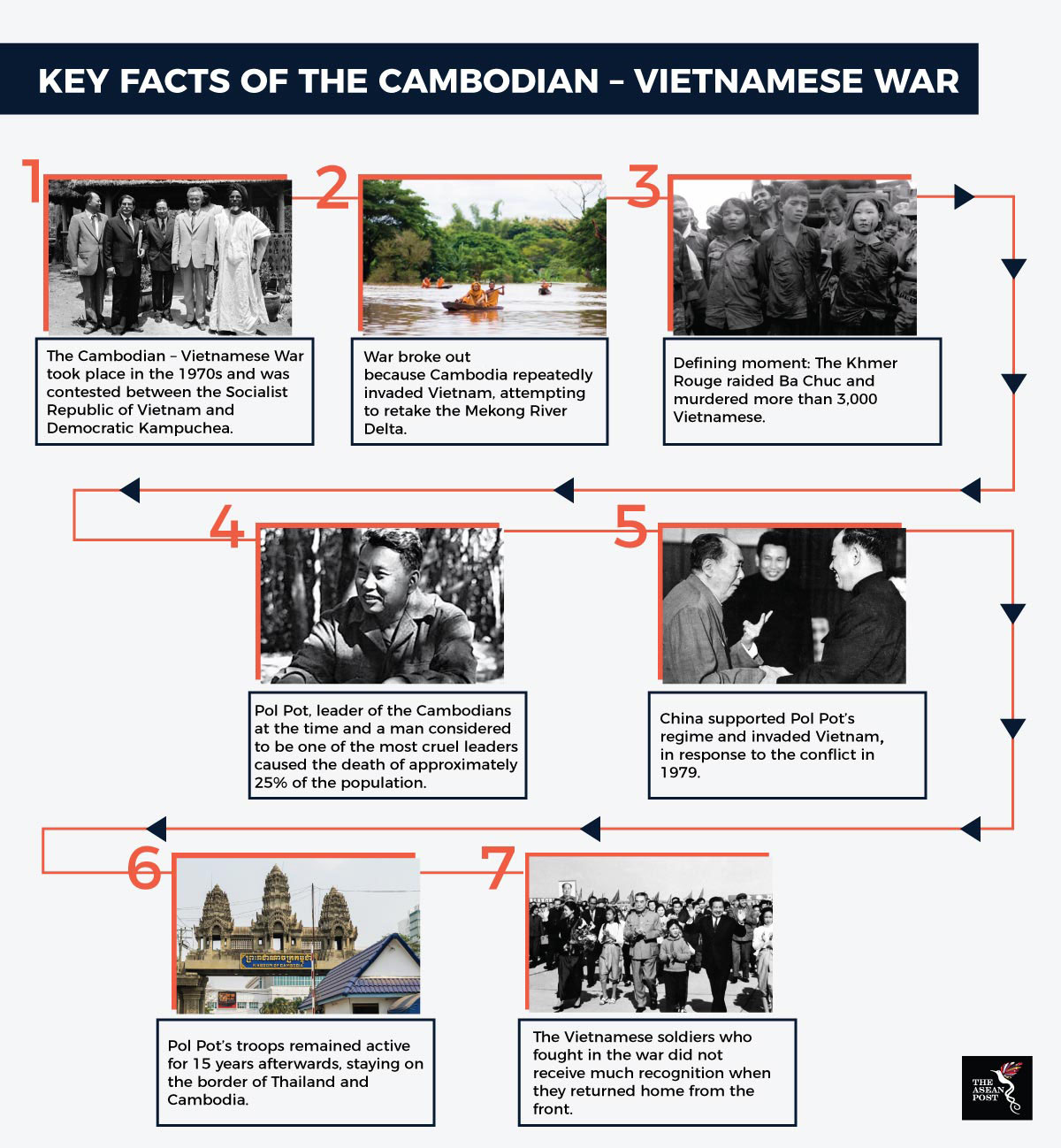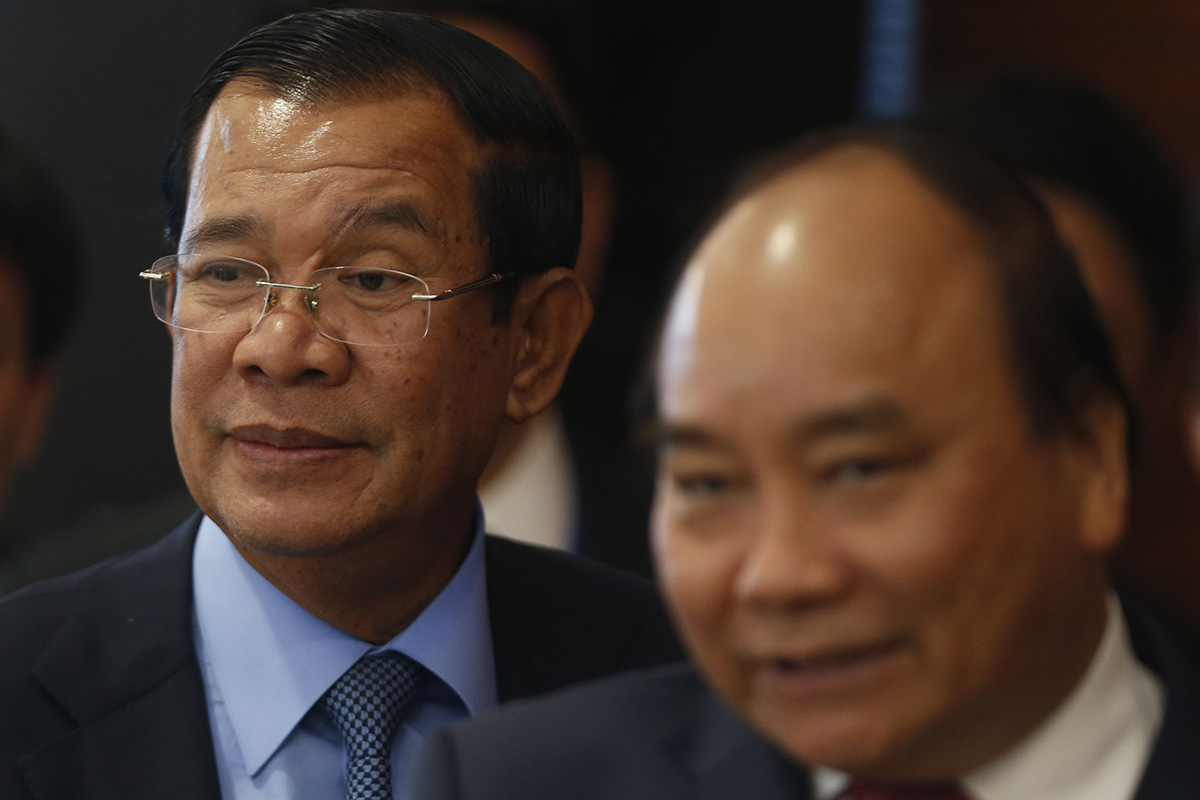Cambodia-Vietnam relations have always been enveloped by the shadows of a bloody past. This past refers to the Cambodian-Vietnamese War which was an armed conflict between then Democratic Kampuchea and the Socialist Republic of Vietnam. From 1975 to 1977, isolated clashes along the land and maritime borders proved to be a hallmark of this bloodbath, sporadically resulting in division-sized military formations. On 25 December, 1978, Vietnam conquered Kampuchea, subsequently occupying the country after removing the government of the Khmer Rouge from power.
In its modern guise (from 1996 onwards), the tensions between both ASEAN countries relate to an omnipresent border issue that encompasses both, land and sea. Still relevant to this day, the land border imbroglio relates to contested locations along the common routes and to the demarcation of the border line, which Vietnam deems to be arbitrary. On the other hand, the maritime dispute encapsulates water and continental shelf areas in the Gulf of Thailand to the southeast of Cambodia and to the southwest of Vietnam. To add fuel to the fire, Cambodia rejected Vietnam’s proposal to build four formal checkpoints with the former only accepting one. In retaliation, Vietnam blocked off four heavily travelled, informal crossings. The primary contention as brought forth by San Chey, the country director of the Affiliated Network for Social Accountability is that Vietnam may want more efficient routes to smuggle illegal timber into Cambodia.
As such, sentiments of an anti-Vietnam nature are ubiquitous in Cambodia and has often been used as a tool by opponents of Prime Minister Hun Sen, who took over the helm during Vietnam’s occupation of Cambodia after it defeated the genocidal Khmer Rouge regime in 1979.

Vannarith Chheang, Chairman of the Cambodian Institute for Strategic Studies (CISS), elucidates that the strong nationalist ideology within the country has diminished any hopes of attaining a semblance of peace with its much-maligned neighbour. In 2009, a nascent and perceived Vietnamese threat gained momentum when then opposition leader, Sam Rainsy supposedly encouraged villagers to uproot border markers on the Cambodia-Vietnam boundary in the Svay Rieng province. With this in mind, the intensification of the border disputes came about after lawmakers from the opposition Cambodia National Rescue Party (CNRP) led activists to the to-be-demarcated border region in the north eastern provinces, leading to bloody clashes in June of that year.
Early this year, Kirth Chantharith, a spokesman for the National Police of Cambodia, pointed out that Ratankkiri provincial authorities are hard at work trying to resolve the dispute, urging Vietnam to reopen the four blocked crossings that were shut in response to a denied building of formal barriers.
A closed-door meeting between the two countries in August, 2016 pertaining to the aforesaid border issue ended in a stalemate, with neither party wanting to budge from their positions.
Va Kim Hong, head of the Cambodian Border Committee, pointed out that his country observes the boundary with Vietnam as set in 1983, with reference to maps of Indochina, the former French colonial territory that is now comprised of Vietnam, Cambodia, and Lao PDR. He is of the opinion that Phnom Penh should use “the map that the colonial power left for us when we gained independence in 1953” as an unwavering guide.
Border contestations will persist as long as the Cambodian political narrative revolves around a nationalism that is skewered towards hate and distrust. Transparency and public engagement are urgently required in the border negotiations and demarcation process between not only Cambodia and Vietnam, but other neighbours as well, including Lao PDR. The hoi polloi will remain susceptible to political manipulation in the absence of the aforementioned checks. What could be done potentially, with regards to the mitigation of conflict is to minimise anti-Vietnam sentiment so as to have a more impartial or objective view of the situation as it is. Both sides should not be swayed by preconceived notions and biases. This is of course easier said than done.
